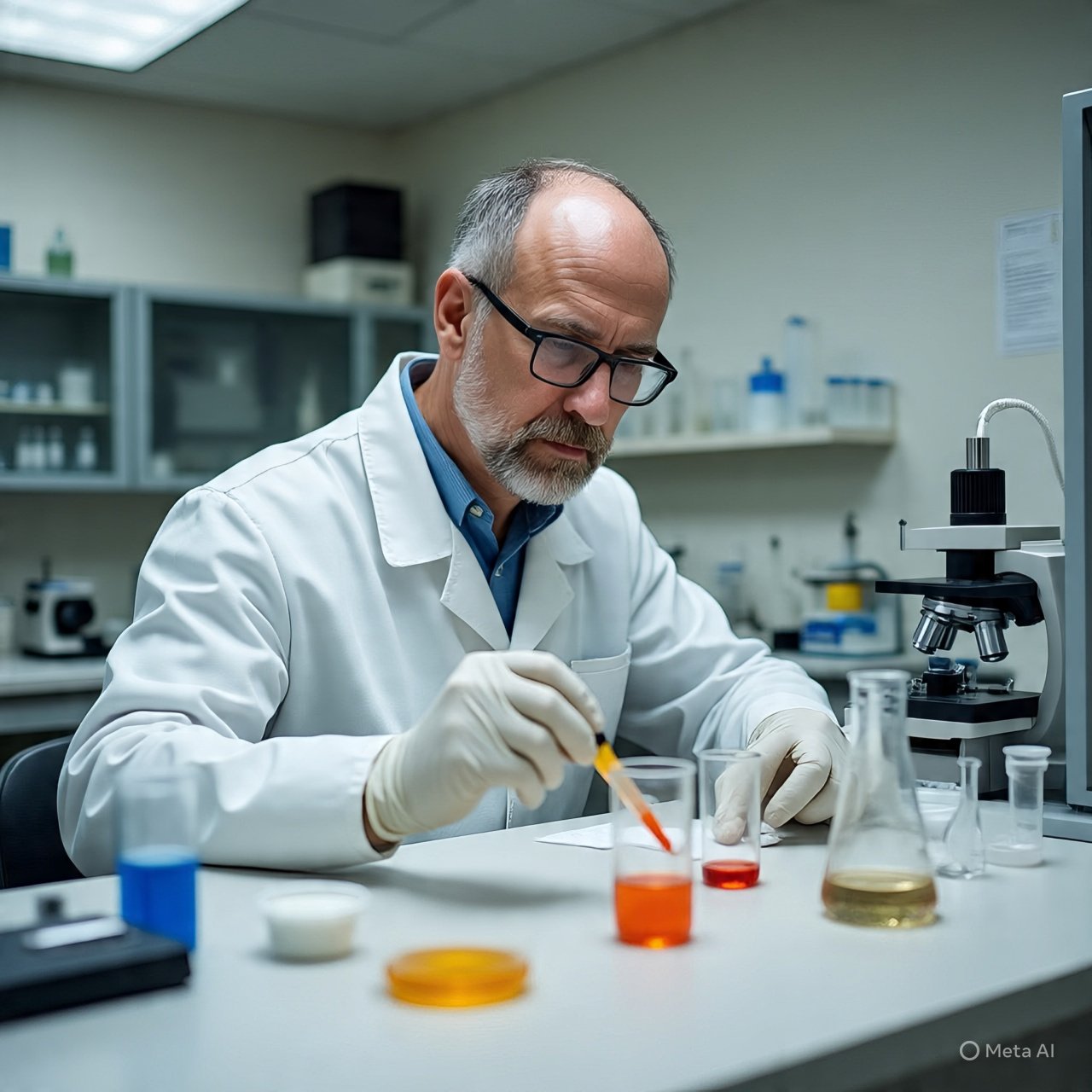Bioluminescent Agriculture: Engineering Crops That Glow When Thirsty
Introduction
Bioluminescent agriculture represents a revolutionary advancement in the world of farming, combining plant genetic engineering with the natural phenomenon of bioluminescence. This concept is based on installing genetic systems in plants that automatically emit light when water deficiency is detected, helping farmers immediately understand plant needs. This technology not only increases water use efficiency but also significantly improves crop health and yield. Combined with modern sensors, artificial intelligence algorithms, and automated irrigation systems, this system establishes a new type of communication channel between plants and farmers. This approach not only saves water but also brings rationality in the use of fertilizers and other agricultural chemicals, reducing environmental pollution.
The Science of Bioluminescence
Bioluminescence is a natural biological process where chemical energy is directly converted into light energy. This process occurs as a result of a special chemical interaction between the luciferase enzyme and luciferin substrate. Through modern genetic engineering, we can insert genes into plant cells that operate under water-stress-sensitive promoters. When water deficiency occurs in the plant, these promoters immediately activate and begin expressing the luciferase gene, resulting in the plant emitting visible light. This light is typically in the blue or green spectrum, easily visible to the human eye. Modern research has further refined this process, allowing control over light intensity, color, and duration according to water deficiency levels. This system installed in each plant functions like an automated bioluminescent factory, producing different types of light in response to external stimuli.
Genetic Engineering: Teaching Plants to Communicate
To incorporate bioluminescent properties into plants, we use advanced genetic editing techniques like CRISPR-Cas9. First, we insert sensitive promoters into the plant genome that activate immediately in response to water deficiency. Then we link these promoters to the luciferase gene. Additionally, we incorporate the ability to produce luciferin in plants so this system can operate autonomously. This complete system enables the plant to regulate light intensity and frequency according to its needs. Modern genetic engineering methods provide us the possibility to install this system in different types of plants, allowing solutions tailored to each crop’s specific requirements. This process involves making specific changes in plant DNA using advanced gene editing techniques that help them acquire bioluminescent properties.
Water Stress: The Silent Cry of Plants
Plants sense water deficiency through various complex methods. When soil moisture levels decrease, hormonal signals are released from plant roots that indicate water shortage. These signals cause leaf stomata to close, reducing plant transpiration. In our engineered system, these same hormonal changes activate the bioluminescence gene. Light intensity is directly proportional to water stress levels, allowing farmers to not only detect water needs but also accurately estimate their intensity. This system externally displays the internal condition of plants, giving farmers exceptional ease in decision-making. These biological changes in plants during water stress are part of a complex signaling network, which now transforms into visible light through our engineered system.
Suitable Solutions for Different Crops
We have developed specialized systems for different types of crops, each designed according to the specific needs of each crop. For example, for wheat we designed a system that responds in the early stages of water deficiency, while for rice we adopted a different approach that measures continuous water pressure. Specific promoter systems are used for each crop, designed according to that crop’s particular requirements. This methodology helps us provide effective solutions for every type of crop. Different types of bioluminescent systems have been developed for various crops, each optimized according to growth habits, water requirements, and environmental conditions. This ensures each crop receives water supply according to its specific needs.
Data Analytics: Translating Light
We use special sensors with high-resolution imaging capability to collect data from the light emitted by plants. These sensors record light intensity, color spectrum, and flashing patterns. Then we analyze this data through artificial intelligence algorithms. This system can also predict plant needs, giving farmers required irrigation information in advance. Over time, this system becomes more precise as it continuously collects data. Modern data analytics methods help us understand how plants respond under different conditions. This data analytics system operates on machine learning algorithms that continuously improve their predictions over time.
Environmental Benefits: Water Conservation
Through this technology, we can reduce irrigation water usage by 50-70%, which can play a significant role in solving the global water crisis. Additionally, it optimizes fertilizer use, significantly reducing groundwater pollution. This system perfectly aligns with environmental protection principles and promotes sustainable agriculture. Besides water conservation, this system also reduces the use of chemical fertilizers and pesticides, improving soil health and protecting biodiversity. Thus, this technology is proving beneficial not only for farmers but also for the entire ecological system.
Practical Use for Farmers
Farmers can easily use this technology through smartphone applications. These apps detect plant light and send simple alerts, allowing farmers to immediately know water requirements. This system replaces traditional irrigation schedules, enabling farmers to irrigate according to exact water requirements. This approach not only saves time but also increases yield. The applications created for farmers are based on user-friendly interfaces that any farmer can easily use. Through this system, farmers receive real-time notifications that help them make timely decisions.
Research and Development: Continuous Improvement
We are continuously improving this technology, and in recent trials we have increased light efficiency by up to 300%. We are also working on new colors and patterns that can indicate different nutrient deficiencies. In the future, we will continue working to further improve this system, adding additional features for disease detection. In this research and development process, we are conducting experiments on different types of plants to make this technology effective for every type of crop. Additionally, we are working on different light wavelengths that can indicate different types of needs.
Economic Aspects: Cost and Benefit
Despite initial costs, this technology proves very economical in the long term. Water savings and increased yield quickly return the investment. For small farmers, we have developed affordable solutions that match their financial capacity. This system is economically sustainable and can be easily implemented in developing countries. Economic analysis shows that using this system can increase farmers’ income by 30-40%, while reducing production costs by 25-35%. This technology is proving equally beneficial for both large and small farmers.
Global Implementation
We are introducing this technology in different countries, where localized solutions are being developed for each region. This technology is proving particularly useful in dry regions where water scarcity is a major problem. Positive results are emerging globally, increasing hopes for this technology’s future. The system’s effectiveness has been proven during field trials in various countries. This technology is being successfully implemented in various countries across Africa, Asia, and Latin America, where positive results have emerged.
Safety and Ethics
We have conducted rigorous tests for this technology’s safety, proving it is neither harmful to the environment nor to human health. All genetic modifications have regulatory agency approval, and we strictly adhere to ethical principles. All necessary safety protocols are followed before using this technology. We have ensured that these genetically modified plants will not pose any threat to the ecological system. International safety standards have been maintained throughout all developmental stages.
Future Plans
We are working to further improve this technology. Future versions will include early warning systems for different diseases that can detect diseases in plants. We are also working on yield prediction features that can accurately estimate crop production. In the future, this system will become even more comprehensive, with additional features being added. We are also working on integrating this system with IoT devices that can control automatic irrigation systems. Additionally, we are developing specialized systems for different crop varieties.
International Cooperation
We are working with research institutions worldwide, helping rapid technology dissemination. We are also running special training programs for developing countries that train farmers in using this advanced technology. This success would not have been possible without international cooperation, and we will continue this collaboration in the future. Scientists from different countries are working together to further improve this technology. This international cooperation is helping us develop effective solutions for different regions.
Final Results
Results from trials so far are very encouraging, providing clear evidence of this technology’s success. Farmers have appreciated the system’s usability and effectiveness, and besides water savings, clear improvement in crop quality has been observed. Tests conducted in different regions have proven that this system is equally effective in different types of climate and soil. These results show that this technology not only saves water but also improves both crop yield and quality. The system’s reliability and efficiency have been proven during tests on different crops.
Conclusion
Bioluminescent agriculture heralds a new revolution in farming that not only helps in water conservation but is also playing an important role in improving global food security. In the future, we will present it with even more advanced features that will bring significant changes in the agricultural sector. This system will not only make farmers’ lives easier in the coming times but will also prove helpful in ensuring food supply for the entire human population. Through this technology, we can establish a sustainable and efficient agricultural system that will ensure food security for future generations.


